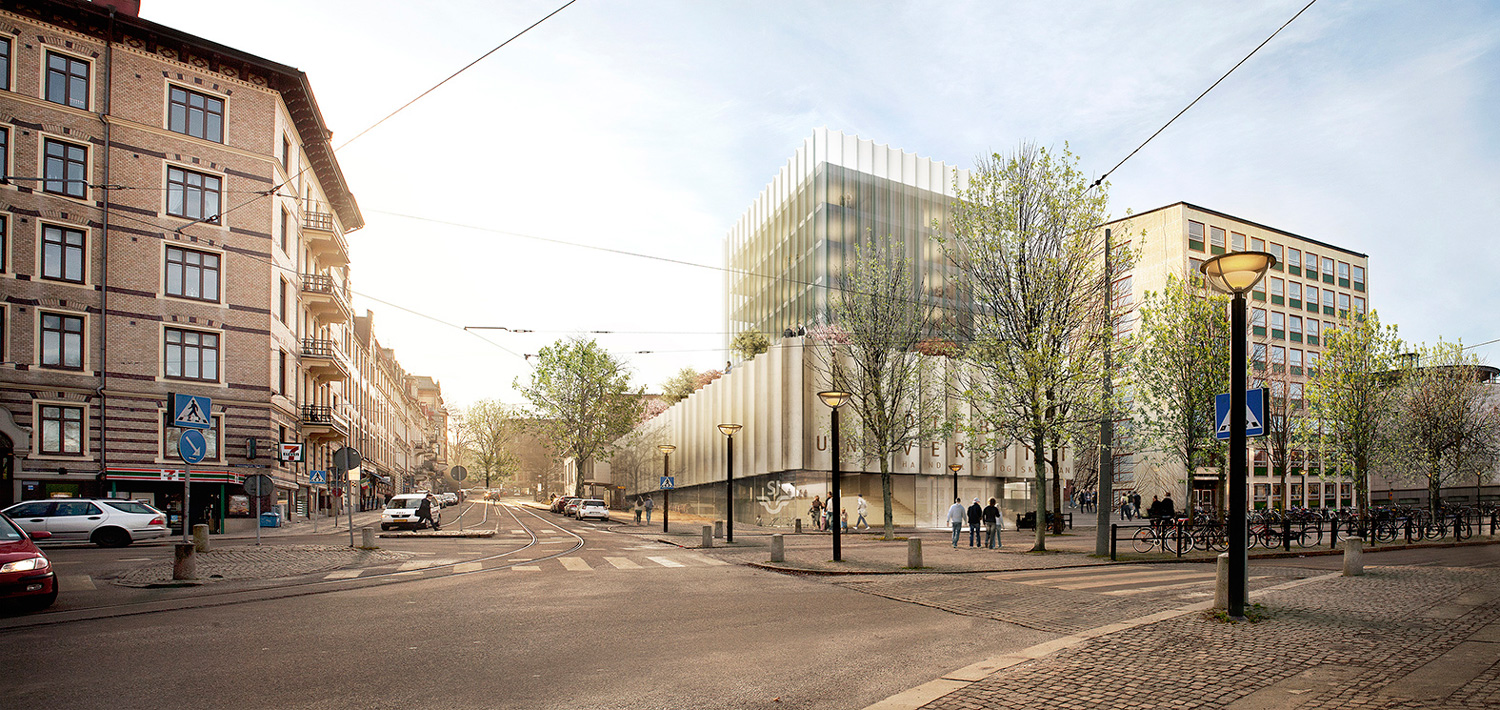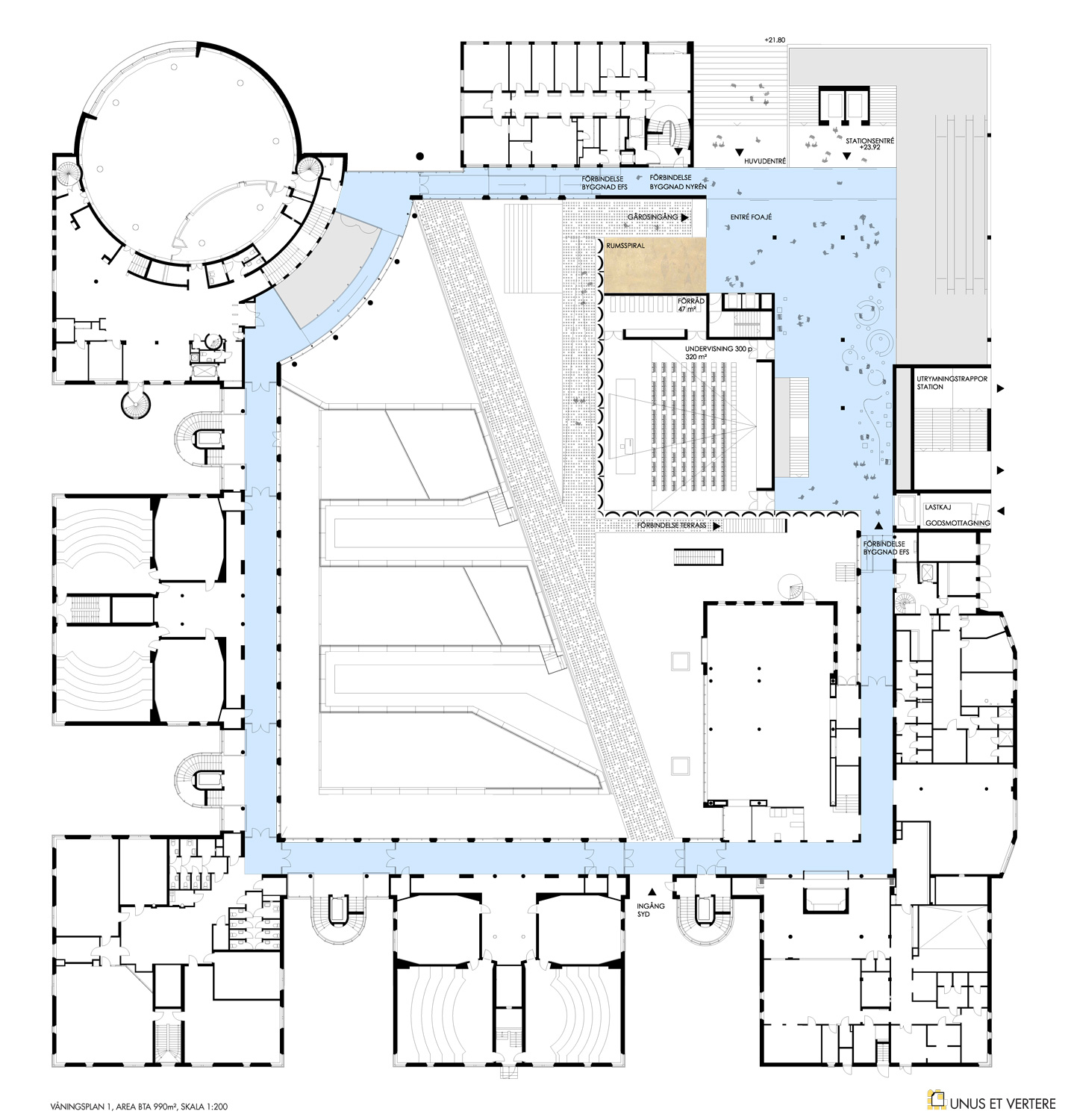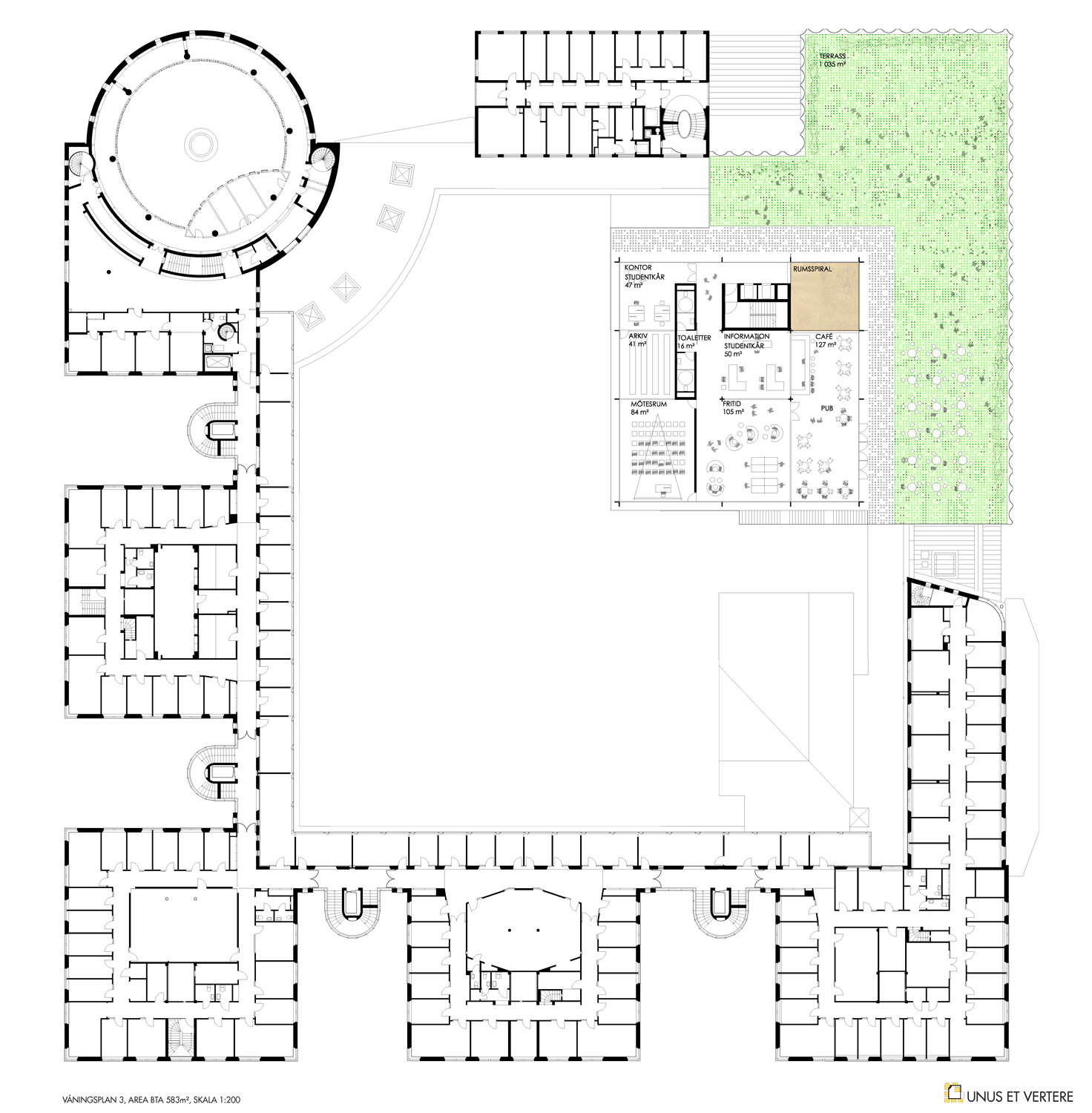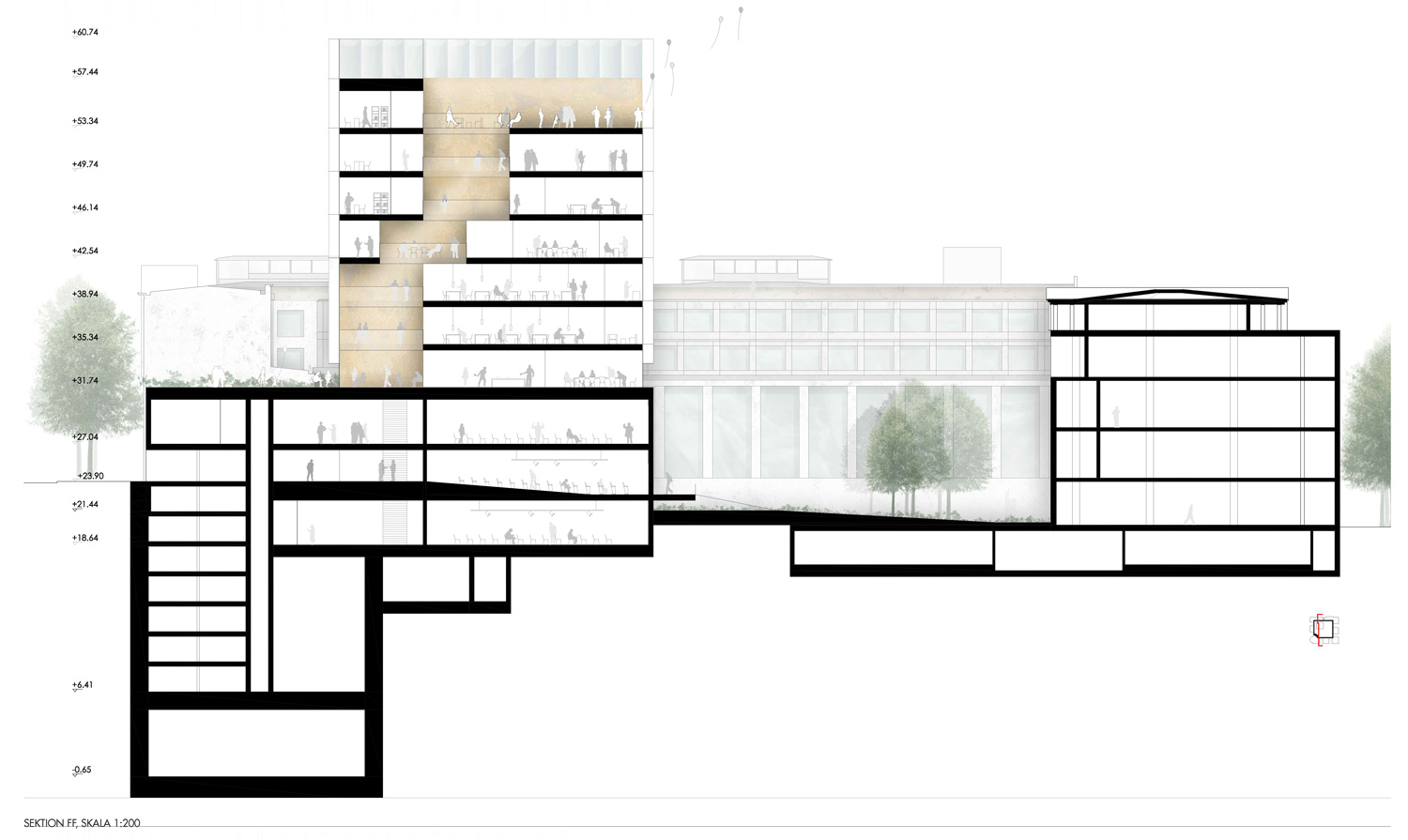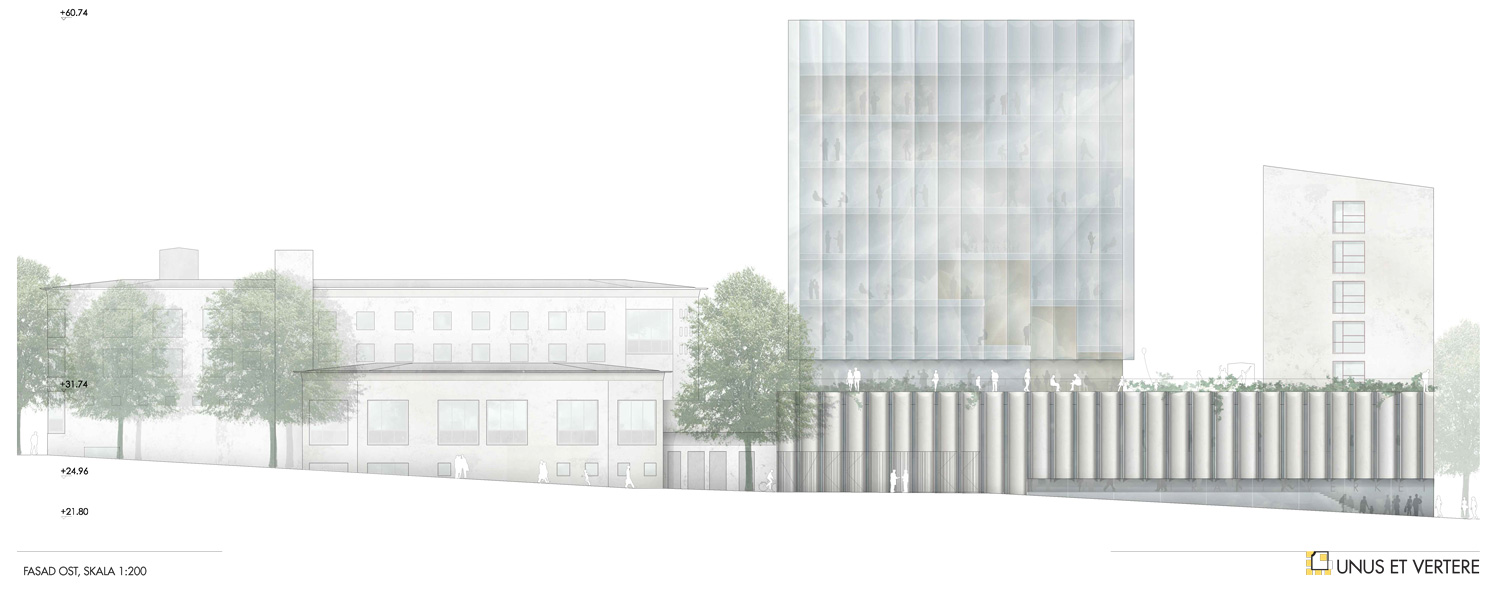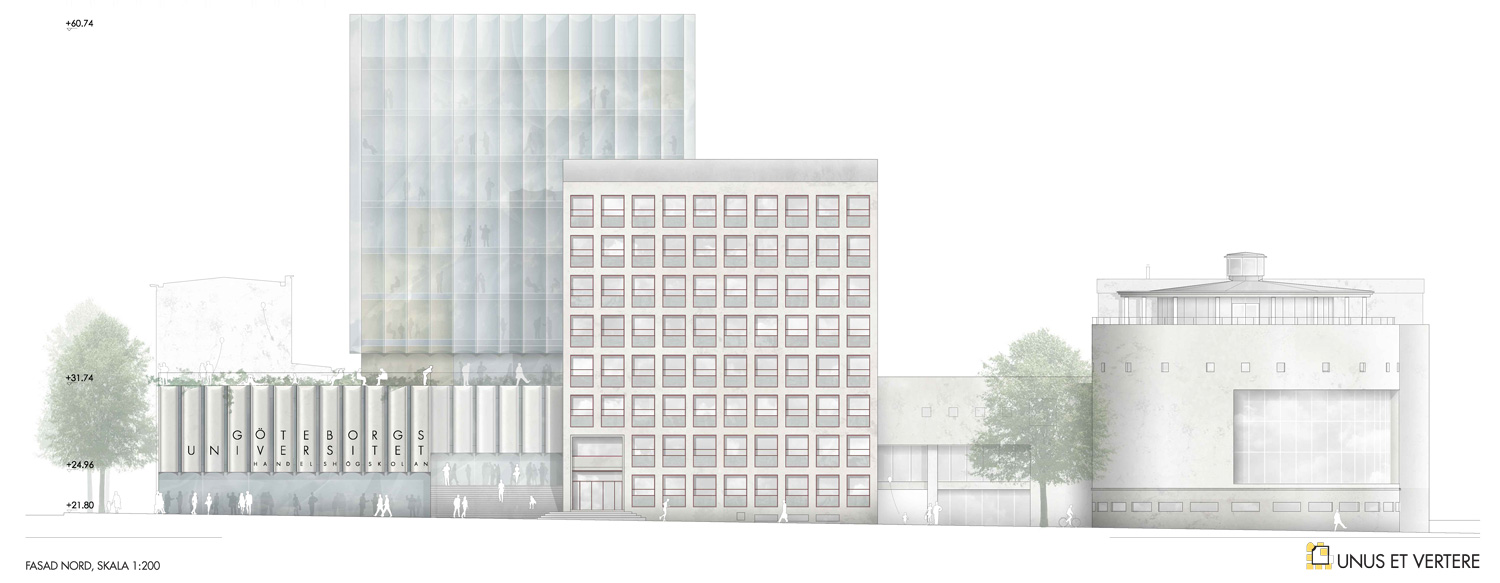1179-NIE-GOT.SE-2015
Client: Akademiska Hus Region Väst Gothenburg
Status: Competition (2015)
Location: Göteborg, Sweden
Coordinates: 57.6969914, 11.9572426
Climate: Continental, Temperate
Material: Glass
Environment: Urban
Visualizer: Play-Time architectonic images
Scale: 8.175 ㎡ Medium
Types: Education, University
The competition for the extension of the School of Business, Economics, and Law requires an answer to the increasing necessity of space and the integration with the exit of the new Haga station. The new volume needed will disappear stepping back to the interior of the block, allowing to preserve the idea and the presence of the original project of Carl Nyrén.
The facade proposed consisting of vertical lines, dialogues with contemporary grammar with the orthogonality of The “stone-like” volume over the exit of the new station gathers the big flows of students and travelers. Over this Podium floats, apart from the street, a transparent cube that hosts the quiet uses. Cube and Podium generate between them a new elevated horizontal plane, where the students can enjoy open spaces in relationship with the city, and fantastic views of the park and the library.
A helix of double-height spaces concatenated and turning around themselves, connect visually all the spaces, enhancing the Idea of University as a whole, as an open place to exchange Ideas.
Architectural concept
It is considered of great importance the integration in the global operation of the School. In this sense, the circulation ring already existing is preserved and connected visually and functionally directly to the exit of the station. Around the ring, the big auditoriums are allocated, next to common spaces that improve socializing and exchange of ideas between students. At the level of the terrace are the School´s student union facilities, which enjoy a generous open-air area.
In the cube are located the study areas, group rooms, and offices for staff. The orthogonal distribution allows the seven floors a great program flexibility, on the basis of generality, that can be easily adapted to changing needs. Finally, Operation and storage facilities, as well as recycling center are connected on the basement to the cargo bay on the south-east of the new extension to the Haga Kyrkogata street.
Structural system
Lateral force resisting system. The lateral load resistance system of the podium building is achieved with sheer walls and concrete cores. The center core with the elevators and stair arises of the podium and continues throughout the cube’s roof creating the lateral force resisting system of the cube.
Slab System
The slab system consists of a composite slab system on secondary steel beams. These secondary beams are supported by the primary beams. Due to the suspended ceiling, the MEP services and devices, as well as the structural steel beams, will not be visible.
The high construction speed of composite slab systems using steel decking on steel beams compared to conventional slab systems reduces the overall construction time. With added fire protection coatings or a sprinkler system, a composite system is the most economical, flexible option to allow large spans and to reduce the weight of the buildings. The chosen slab system and column arrangement allow a maximum of flexibility for the users.
Foundation
The vertical forces are transferred via rectangular composite columns and concrete walls to the foundation. The structure is founded on a raft. The need and number of piles are depending on the final geotechnical investigation.
Façade
The façade of the podium consists of two layers, with the first layer of opaque/semi-opaque elements and a second layer of glazed façade units.
A fully glazed transparent cube arises of this semi-opaque podium building. This is achieved by using a Closed Cavity Façade (CCF). The façade has a cavity between the inner and the outer skin which is completely sealed. Dry and clean air is constantly fed into the façade cavity in order to prevent the formation of condensation on the glazing. Outside conditions are constantly monitored electronically and the quantity of dry air is adjusted accordingly.
As a result, energy consumption is reduced to a minimum while a unique transparency of the façade is achieved. An additional sun protection system within the façade cavity controls the light and energy input in the building. Thus this Closed Cavity Façade will meet even the highest comfort and energy requirements.

